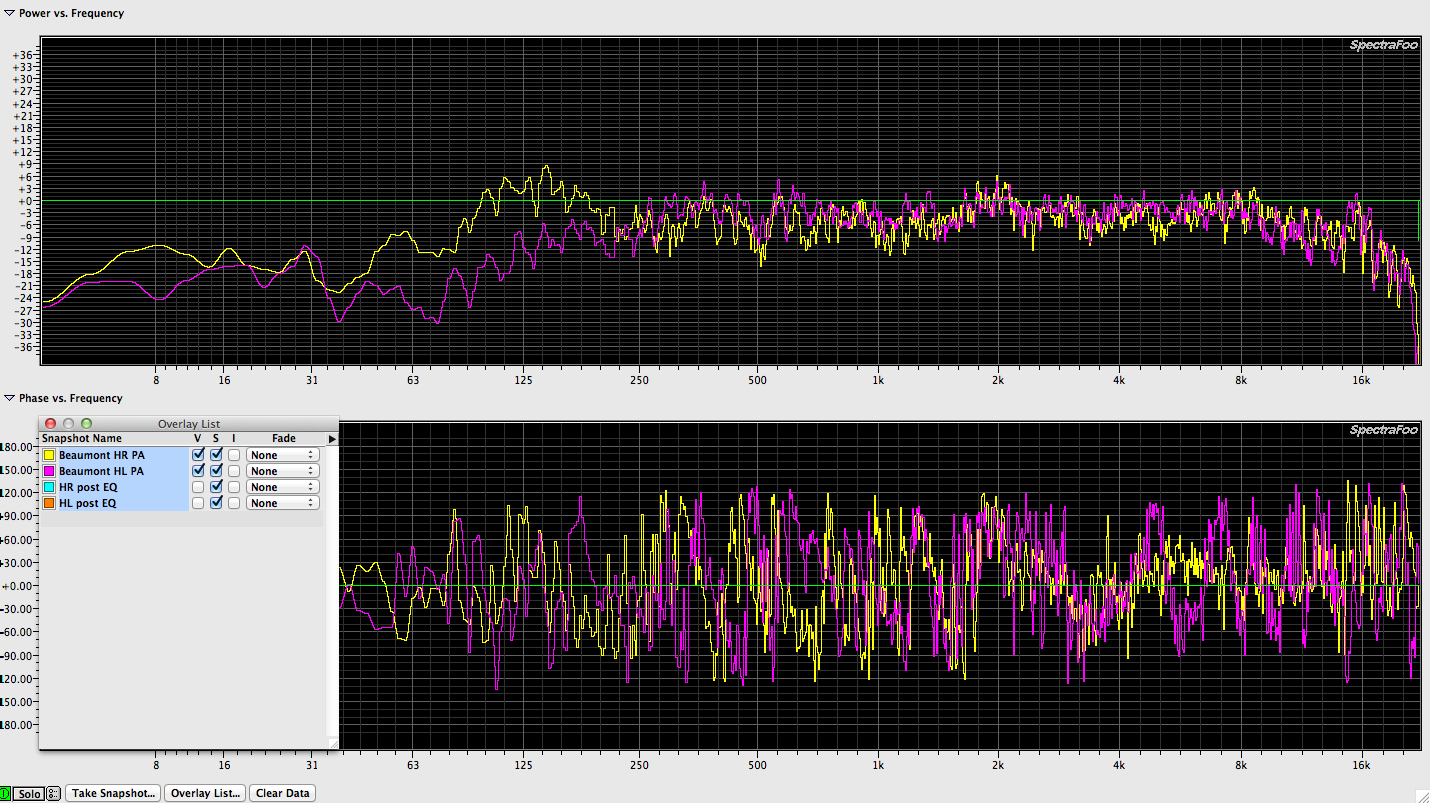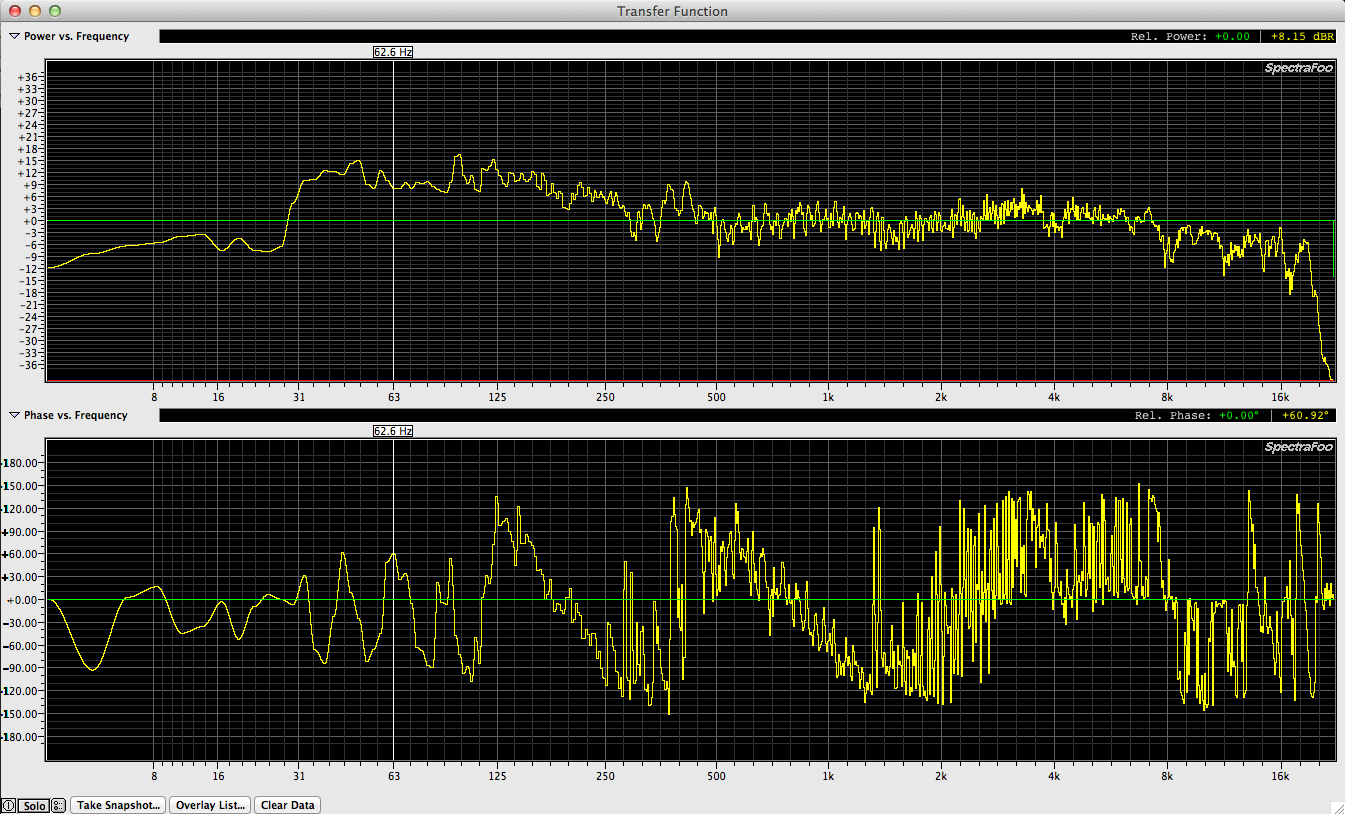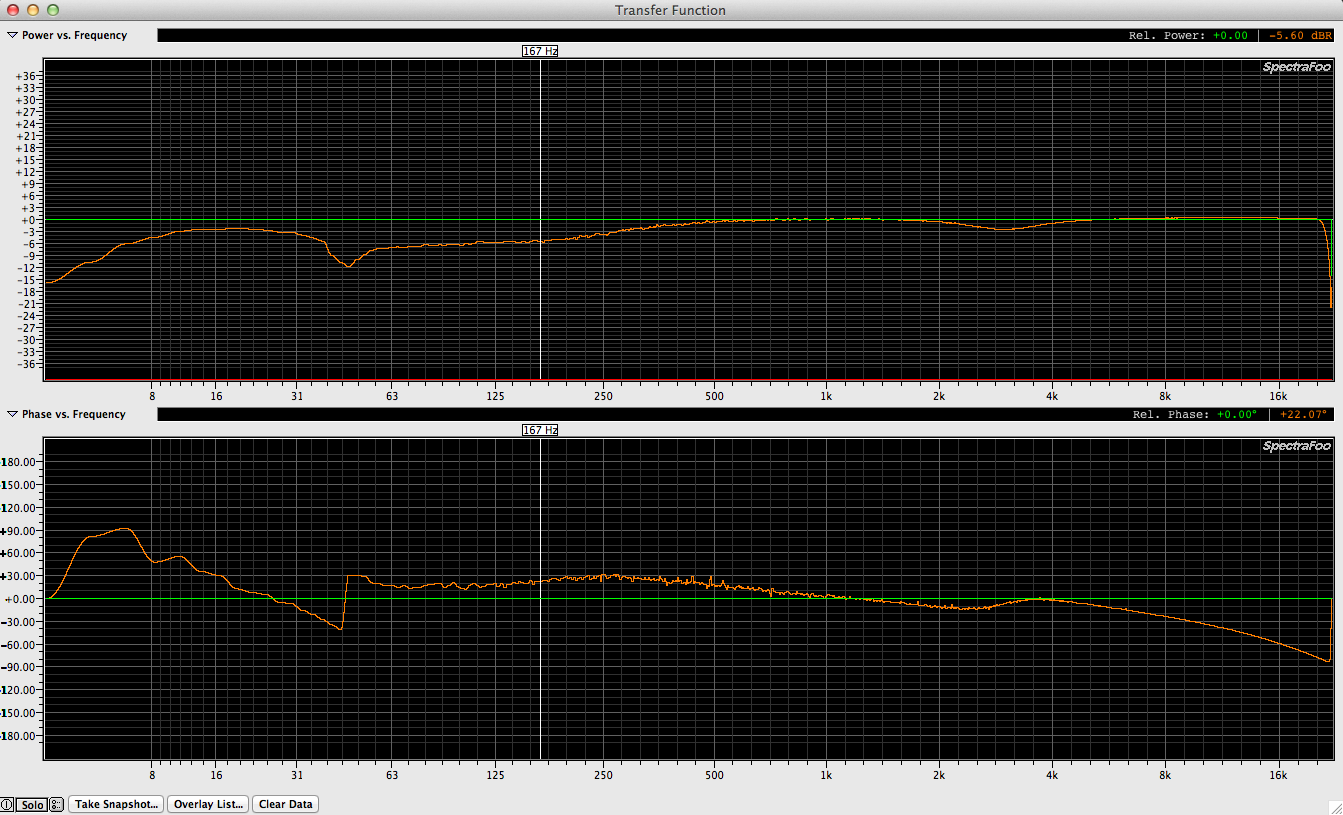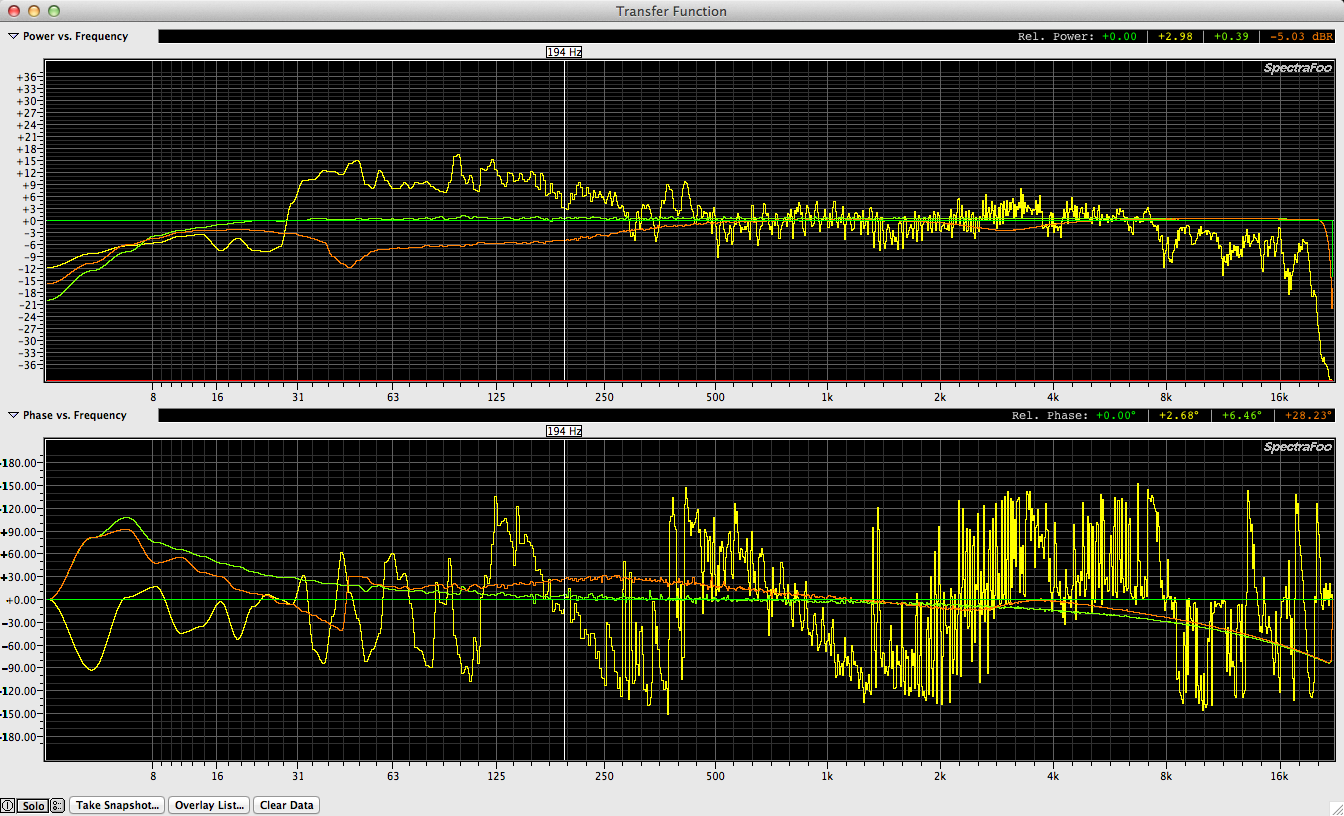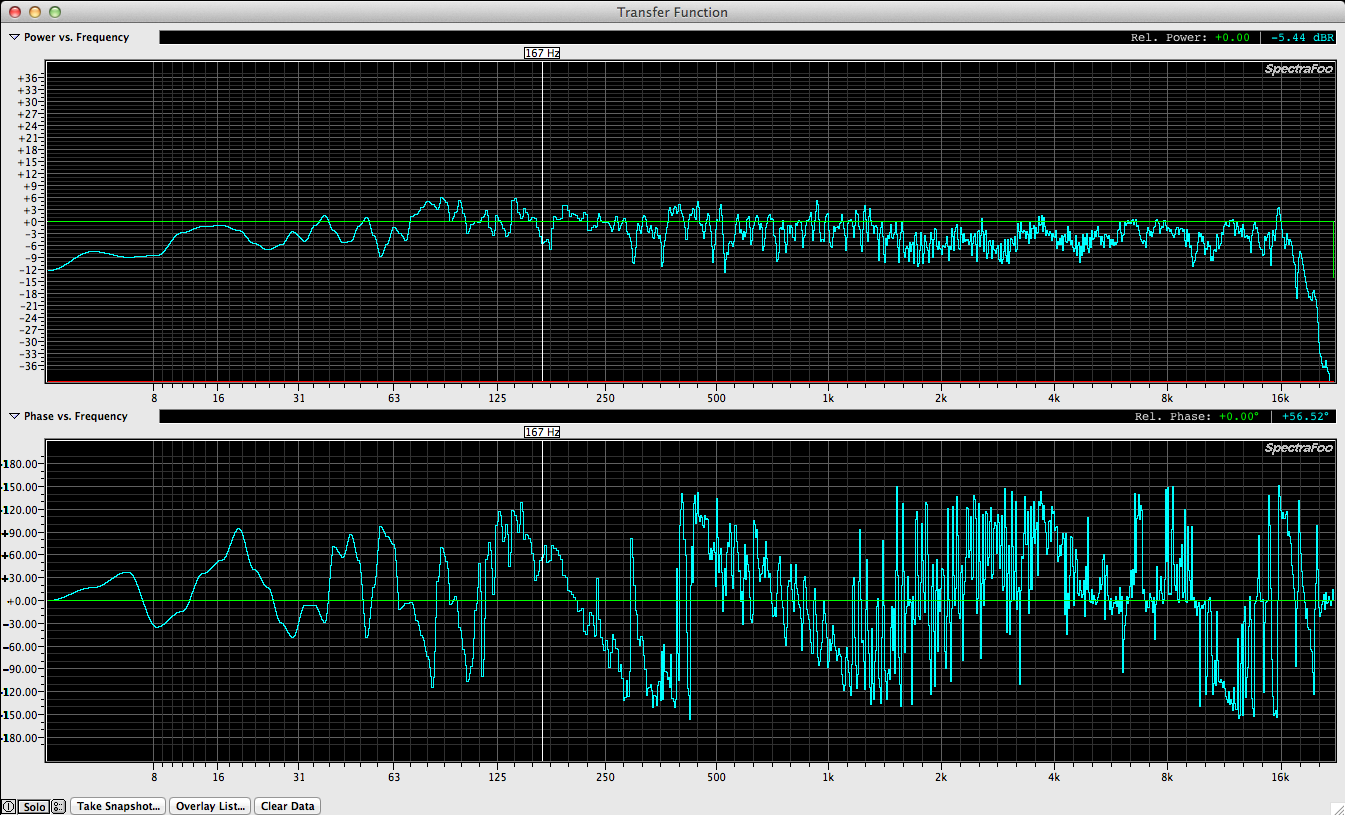What does plexiglass do to the sound behind it or in front of it?
Plexiglass shields are used to manage live drums, stage monitors, guitar amps & to protect musicians ears from other instruments on stage. What frequencies are actually affected by the plexiglass and are there downsides to using it?
Let’s find out…
The measurement setup:
DUT – Plexiglass shield
SOURCE – Meyer UPJ
RESPONSE – Earthworks TC30K.
APP – Spectra Foo Complete
PLATFORM – Mac Book Pro 2010
AUDIO I/O – Metric Halo 2882.
Here we go:
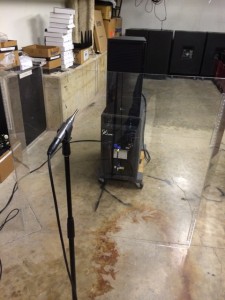 This is the trace with the plexiglass mid way between the mic & the speaker
This is the trace with the plexiglass mid way between the mic & the speaker
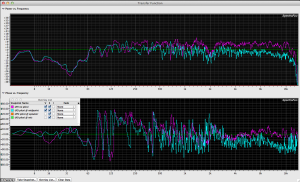
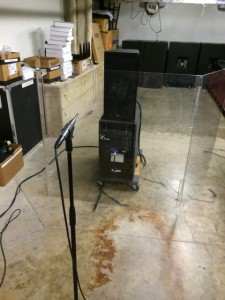 This is the trace with the plexiglass a few inches away from the speaker
This is the trace with the plexiglass a few inches away from the speaker
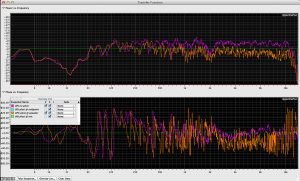
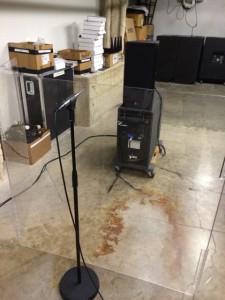
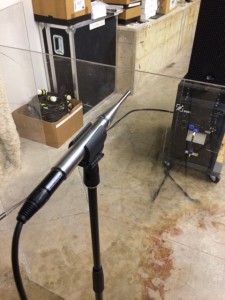 This is the trace with the plexiglass a few inches away from the mic
This is the trace with the plexiglass a few inches away from the mic
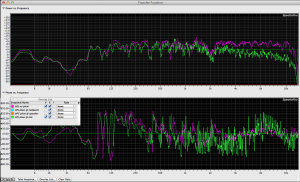 This is the trace with all the captures visible.
This is the trace with all the captures visible.
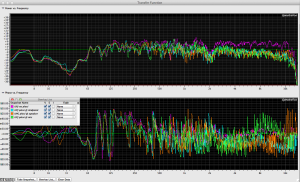 What is happening to the sound behind the plexi once the plexi is blocking it’s path? For example, how does wrapping a drummer in plexiglass affect the drum sound? If the drummer has an open vocal mic inside the plexiglass cage, how is that affected?
What is happening to the sound behind the plexi once the plexi is blocking it’s path? For example, how does wrapping a drummer in plexiglass affect the drum sound? If the drummer has an open vocal mic inside the plexiglass cage, how is that affected?
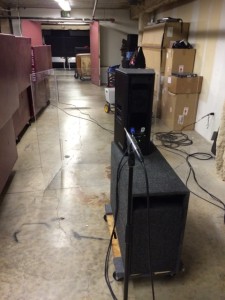
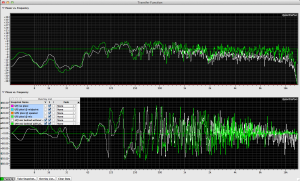 There are obviously two sides to every plexiglass panel & while it may solve issues on one side, it may cause others. After seeing the FR of the various traces & how plexiglass affects the sound, I will go forward with a better understanding of what I am losing, what I’m gaining & how to approach correcting those inherent aspects of plexiglass use.
There are obviously two sides to every plexiglass panel & while it may solve issues on one side, it may cause others. After seeing the FR of the various traces & how plexiglass affects the sound, I will go forward with a better understanding of what I am losing, what I’m gaining & how to approach correcting those inherent aspects of plexiglass use.

